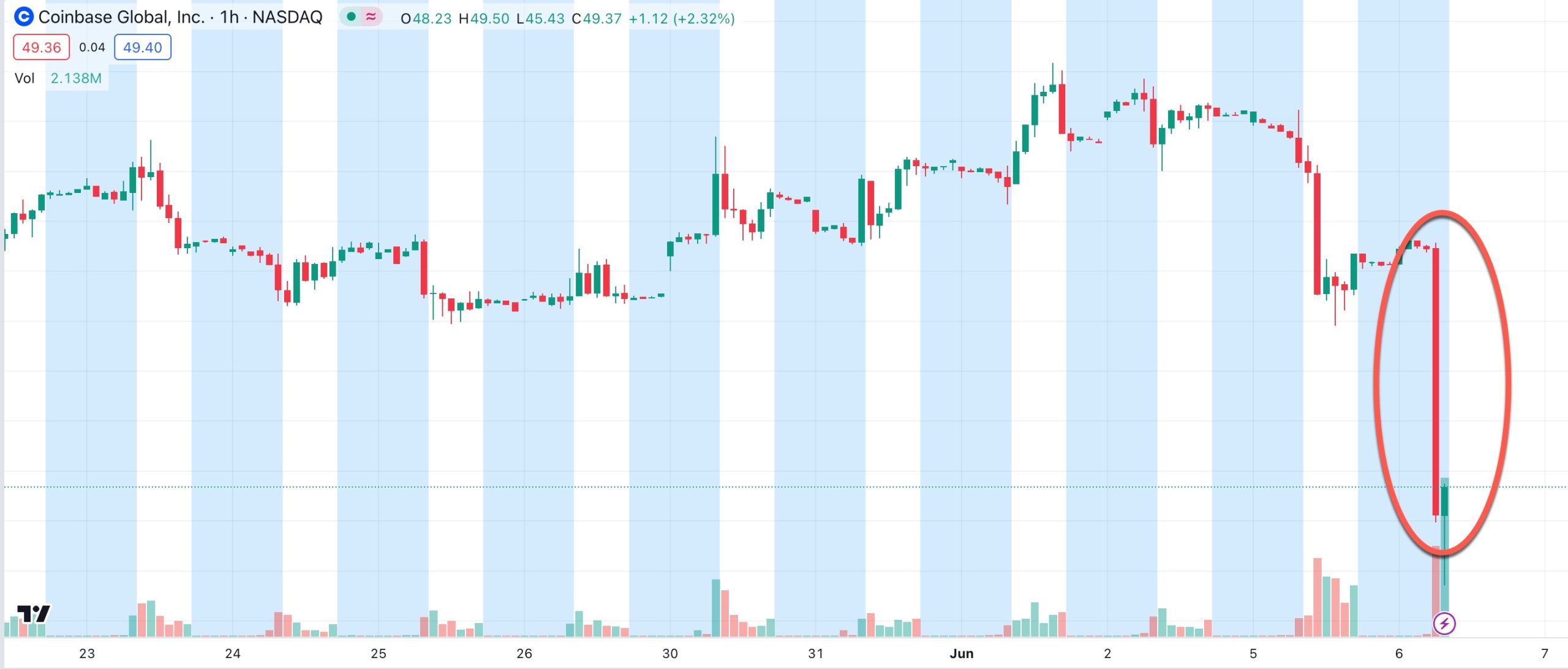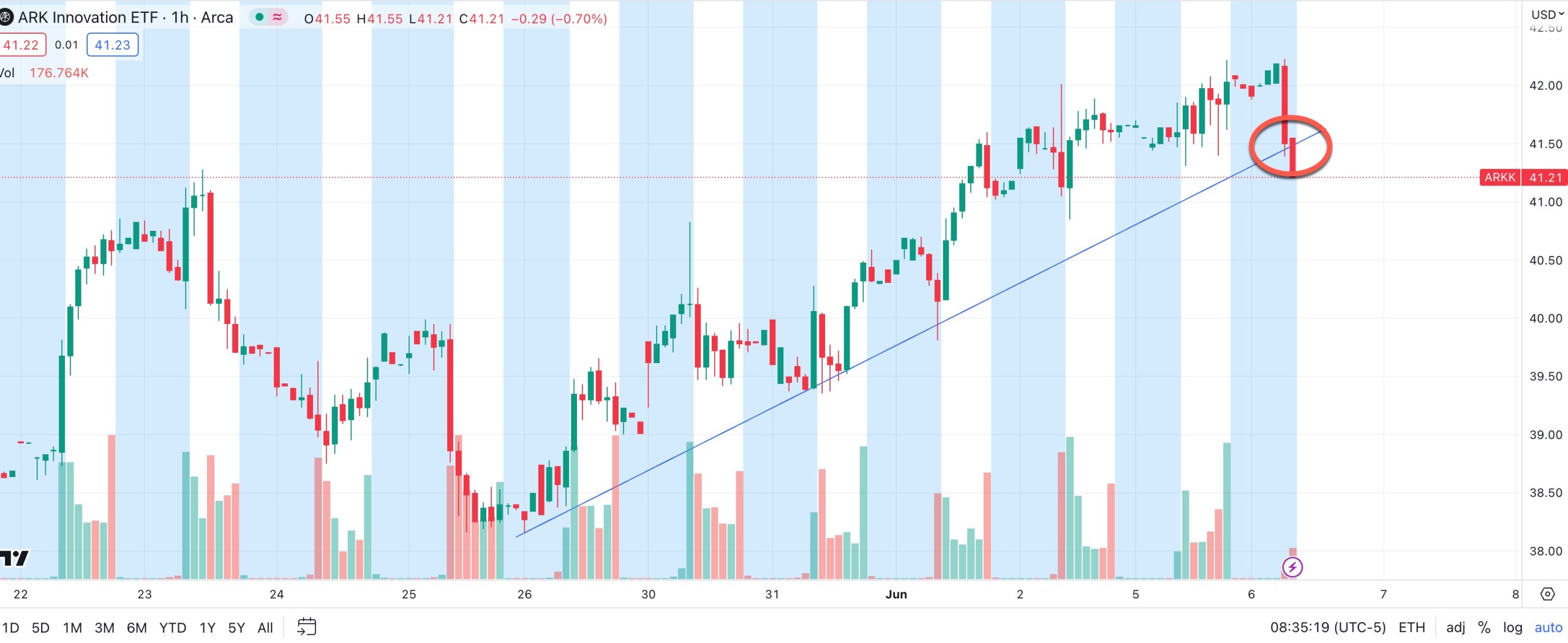Market Commentary: How To Make Money When You Missed The Move
On June 6, shares of Coinbase plummeted by 16% when it fell on news that the SEC was suing the company for exchange and staking programs. It’s a common enough occurrence to wake up and see a stock plunge, and most investors fall into two buckets by either chasing the move or wishing they had the foresight to take a position ahead of time. But there is a third choice that smart investors love to employ, but which is not well-known by retail investors. Here’s how it works:
How To Make Money When You Missed a Big Move
This is what the chart of Coinbase looked like when news broke that the SEC would sue the company.

When share prices move this much, it’s tough to chase them lower. Do you short and risk a rip-roaring rally back to old highs? Or do you buy puts that have exploded in value because of both the downward move and a spike in implied volatility?
Why not skip both and explore option three:
Find an ETF that is heavily exposed to the shares that have been shredded but which itself has not yet been taken out to the woodshed by the market. In the example above, that exchange-traded fund is Cathie Wood’s flagship fund, ARKK, the ARK Innovation ETF.
How To Trade The Move
At the same time, Coinbase shares plummeted, ARKK shares were down but not nearly as much. That makes sense. ARKK is a diversified ETF after all. But how diversified?
As it turns out, ARK had a 5.93% stake in Coinbase at the time, representing almost half a billion dollars. A quick look at the chart shows ARK breaking the upward trending support line intraday.
This is the time to wait and see. Hang tight until the close of business and if that trend line remains broken, it can offer a good opportunity to buy puts or bear puts as the dominos fall following the Coinbase news.
Often downdrafts lead to implied volatility spikes that make puts very expensive so to offset that somewhat a bear put is preferable. Buying puts at the money and selling them 7-8 strikes lower could offset the cost of the purchased puts by about 30%. That not only lowers risk but ensures that if implied volatility evaporates, the trade won’t be in as bad a position as it would had puts been purchased alone.
Why Trade The Strategy
After a big move, the risks are high in both directions. A reversal of the news will cause the stock to undo its move in a hurry. A continuation will lead to fast profits. That’s why buying stock or shorting is so risky whereas taking a much smaller position via puts (in the case above) or calls is a much less risky strategy. A lot of money will be made if the initial move continues but the spread trade limits the risk should it stall or reverse.
The main takeaway though is not to think like most others when a big move happens and chase it or give up on it. Instead, find the opportunity, which in this example is to identify the fund that is heavily exposed to the stock but has not yet experienced the warranted share price movement.



